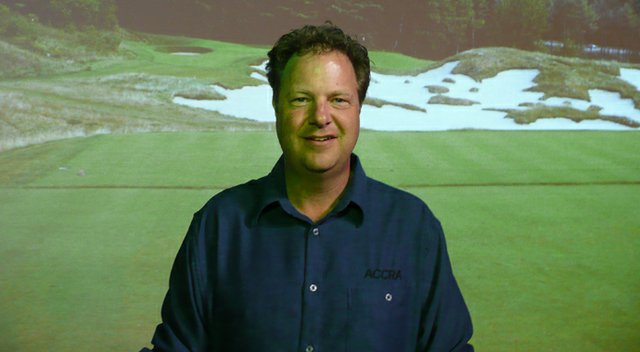Golfweek link
SHAFT MONTH: ACCRA'S CO-OWNER, A PREACHER OF PROPER FITTING
As of Friday, February 8, 2013
Gawain Robertson, co-owner of shaftmaker Accra Premium Golf Shafts in Kingston, Ontario, Canada, may be the most straightforward person in the entire golf shaft industry.
Robertson was a touring pro for 16 years and a club pro for 9 years. In 2008, he and partner Dave Makarucha bought the Accra name from shaft manufacturer UST. Robertson is widely known as the man who makes driver and 3-wood shafts for former world No. 1 Luke Donald, although he appears to be just as concerned about amateur golfers as he is touring professionals.
And he is the first to tell amateur golfers that what they don’t know about shaft torque and flex can hurt them.
Robertson is a loud and insistent spokesman for professional golf club fitters, those individuals who understand how to put together a proper set of golf clubs for each golfer. Getting the right shaft torque and flex is a big part of that process.
The Accra business is based on intelligent, informed fitting, and Accra shafts are available only through a network of some 350 club fitters around the world. Accra shafts belong to two primary families: DyMatch ($199) and Tour Z ($299). Besides Donald, touring pros such as Peter Hanson, Ryan Palmer, Tim Clark, Miguel Angel Jimenez and Mark Calcavecchia have used Accra shafts.
A 30-year industry veteran, Robertson preaches the importance of grasping shaft principles.
“Be careful when you talk about torque," he said. "We know that torque is a measurement of how much a shaft twists. What we don’t always know is how that torque was measured. There is no standard method.”
One common way: Using a torque machine to take readings in two different directions. Then the two are averaged to produce a single torque number. In general terms, a lower number (2.0 into the low 3s) indicates more rigidity, while a higher number (the high 3s into the 4s and 5s) indicates a softer feel.
Accra is among the shaft companies that produce a torque profile by taking zone readings – in essence measuring the entire shaft to gain an understanding of how and where the torque is taking place.
Robertson also urges golfers to understand the whole flex profile of their shafts. Producing a single flex description – R, S or X – can be viewed as a simplification of a complex process that deserves more attention.
Why should all golfers seek an understanding of torque and flex? Because they are part of the equation in the loading of the club during the swing.
The element most important in fitting, Robertson insists, is how a golfer loads the club and the shaft. How much torsion – not swing speed – a golfer is producing during the swing is the critical factor. Torsion refers generally to leverage and specifically to the uncoiling of the body during the swing.
“Good fitters look at how you load a club,” he said. “It’s far more important than your swing speed. The question is this: Which shaft profile works best for you?
“Our Accra shafts don’t have a letter flex,” explained Robertson, who designates a letter and a number, such as the intentionally ambiguous M4 used by many touring pros, to classify each shaft. “We don’t want consumers focusing on what flex they have. A flex letter on a shaft is almost irrelevant.
“What you need to know is what profile shaft works for you. It’s the whole profile. Every good shaft company will make very good shafts that fit every type of player. As a smart golfer, you just have to find out which shaft it is.”
The new language of shafts is such that golfers should be talking about separate shaft characteristics in the tip section, mid section and butt section. Most golfers know that tips can be stronger or weaker, but so can the mid section and butt sections.
Know your swing, know your shafts. According to Robertson, this knowledge will pay dividends.



No comments:
Post a Comment